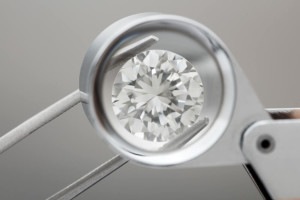The Truth About Precious Stones
An audit of precious stones of the National Museum of Prague revealed that some prized gems were, in fact, cheap imitations. A 5-carat diamond was among the first gems exposed as being plain glass! A 19-carat sapphire believed to be worth millions, was lab-made and worth far less. Half of the museum’s rubies were also products of laboratories.
Was it a case of fraud from the beginning, and if so, how did gem appraisers appointed by the country’s biggest museum fail to raise an alarm? Were the gems real and systematically replaced by members of staff? 
An error in valuing precious gems raises concerns, highlighting the importance of really understanding the truth behind precious stones bought, valued and insured. A good starting point is to be clear about whether the gems are mined or created in a laboratory.
What is a lab-made diamond?
The difference between a lab-grown diamond and a mined diamond lies in the way each is made. Diamonds are formed naturally by the crystallization of carbon under intense heat and pressure deep under the earth’s crust. The stones are delivered to the earth’s surface by volcanic eruptions. The process takes anywhere between 1 billion to 3.3 billion years.
Diamonds can be grown in specialized laboratories using two methods: High Pressure and High Temperature (HPHT) or Chemical Vapor Deposition (CVD). HPHT simulates the forces at work in the earth’s mantle, applying high pressure and temperatures (reaching 5,000 degrees Fahrenheit/3,000 degrees Celsius) to a tiny slice of diamond (the diamond seed) placed into a piece of carbon. This seed bears many carbon atoms and grows into a synthetic diamond. CVD uses lower pressure and smaller equipment, and is generally easier to control than HPHT. Both processes create a big stone from a small fragment of diamond.
How does a lab-grown diamond differ from a mined diamond?
A diamond made in the laboratory is chemically, physically and optically similar to its mined counterpart. It is impossible for the human eye to tell the two apart. A synthetic diamond is certified and graded to the same standards (the four C’s) as a naturally mined diamond.
The advantage of buying lab-made diamonds is that they cost up to 30% less than natural diamonds. The difference in price can be attributed to the high costs of the mining process, which utilizes a significant amount of fuel and electricity. Otherwise, the costs of cutting, polishing and inspecting both types of diamonds are the same.
How to choose between the two?
A synthetic diamond that looks exactly like a mined stone is a less expensive purchase. A mined diamond may be more prized given its relative rarity. However, in an increasingly eco-conscious world, the environmental costs of mining, not to mention the humanitarian impact of the diamond trade, mined diamonds may not hold the bragging rights they enjoyed in earlier years.
Marketing surveys reveal that awareness around lab-grown diamonds has risen to 80% in 2020, up from 58% in 2018. Millennial buyers can be expected to gravitate more towards cheaper, conflict-free diamonds.
Resale price is another factor. A naturally-formed diamond retains up to 50% of its original price, while synthetic diamonds hold on to nil and far less of their original purchase price.
Disclosure and valuation
New and advanced methods of synthesizing gems make it difficult to detect lab-made stones. It under scores the importance of stating whether the diamonds are lab-made or mined, at the time of appraisal.
Having the stones verified is equally necessary. Separate gem reports for mined and lab-grown diamonds are available at major gem grading laboratories. This distinction matters as lab-made diamonds have much lower value than their mined counterparts.
What is the guarantee that the diamonds being sold in the marketplace have been mine d and therefore worthy of their high price? Without appraisal from an independent appraiser explicitly stating whether the stone is natural or synthetic/man-made/grown/lab-grown/cultured/created, the risk of overpaying on claims lurks. The insured should be advised to verify the quality and value of the stones from a trained NCJV gemmologist.
d and therefore worthy of their high price? Without appraisal from an independent appraiser explicitly stating whether the stone is natural or synthetic/man-made/grown/lab-grown/cultured/created, the risk of overpaying on claims lurks. The insured should be advised to verify the quality and value of the stones from a trained NCJV gemmologist.
Familiarity with lab-grown diamonds can provide some measure of assurance at the time of an insurance claim. But it isn’t enough. To avoid substantial losses on fraudulent claims, an appraisal explicitly describing how each stone came into existence, is imperative. If the appraisal does not state that the diamond is lab-grown, effort should be made to ascertain whether it was grown in the lab or formed naturally below the earth’s surface. This assumes even more importance for pricier, colored diamonds. A qualified gemmologist should be able to verify or validate the qualities of the stones in the appraisal.




 03 8596 5908
03 8596 5908